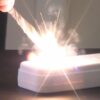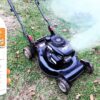Check out Kalvinator Engines: http://www.kalvinatorengines.com
I purchased larger diameter rocker studs for my engine. These new studs are stronger, but we needed to make the threaded holes larger to accommodate the new studs. The old studs were 5/16″, the new ones 7/16″.
In the process, Kevin Frische shows the differences in taps, as well as a few techniques that can be applied the next time you need to tap something. These tips will help you get straight threads with less issues.
The Rocker Studs I used: http://www.compperformancegroupstores.com/store/merchant.mvc?Screen=PROD&Store_Code=CC&Product_Code=4503-16&Category_Code=Studs
The Adjustable Guide Plates I used: http://www.compperformancegroupstores.com/store/merchant.mvc?Screen=PROD&Store_Code=CC&Product_Code=4835-8&Category_Code=GDPLT
Thanks to Kevin Frische for his help in this video.
Previous video in the series: https://www.youtube.com/watch?v=WY5Ud7q_igc
The #FairmontProject playlist: https://www.youtube.com/watch?v=L22GsHQi7tU&list=PLSzhQ6St-ov2nxWVKCeU14Vt7JJ_QSZvs
The best place for answers to your automotive questions: http://www.ericthecarguy.com
Camera: Brian Kast
Thanks for watching!
Discussion about this video: https://www.ericthecarguy.com/kunena/18-The-EricTheCarGuy-Video-Forum/66409-cylinder-head-modifications-for-larger-rocker-stud
Engine Details
Displacement: 363cid
The Block: http://www.pbm-erson.com/Catalog/PBM/Block%20Kits/KITSBK-29
The Crank: http://www.pbm-erson.com/Catalog/PBM/Clearance/PBM85207
The Heads: https://performanceparts.ford.com/part/M-6049-X302
Compression: 8.9:1
The Cam: Comp Cams custom grind: 222@.050″ 222@.050 .357″lobe lift .571″ valve lift (1.6 rocker) .351″ lobe lift .562″ valve lift (1.6 rocker) 114º separation 4ºadvance
Modified: Edelbrock Performer RPM intake
The Carburetor: https://www.holley.com/products/fuel_systems/carburetors/demon/mighty_demon/parts/5402020BT
The Distributor: https://www.msdperformance.com/products/distributors/ford/parts/8582
The Ignition: https://www.msdperformance.com/products/ignitions/street_and_strip/parts/6462
The turbo Kit: http://www.on3performance.com/shop/1987-93-mustang-gtcobra-5-0-foxbody-turbo-system/
Related Videos
The #FairmontProject series: https://www.youtube.com/watch?v=L22GsHQi7tU&list=PLSzhQ6St-ov2nxWVKCeU14Vt7JJ_QSZvs
#DarkMatterPikachu on the Dyno: https://www.youtube.com/watch?v=UADOHm6-BJc
Engine Balancing Video: https://www.youtube.com/watch?v=XjuGkXpha8Q
**Answers to your automotive questions found here: http://www.ericthecarguy.com/faq
Social Network Links
Facebook: https://www.facebook.com/EricTheCarGuy?fref=ts
Twitter: https://twitter.com/EricTheCarGuy
Google+: https://plus.google.com/100195180196698058780/posts
Instagram: http://instagram.com/ericthecarguy
Wanna see more stuff like this from ETCG? Information on Premium Membership: https://www.ericthecarguy.com/premium-content-streaming-etcg-content
Stay Dirty
ETCG
Due to factors beyond the control of EricTheCarGuy, it cannot guarantee against unauthorized modifications of this information, or improper use of this information. EricTheCarGuy assumes no liability for property damage or injury incurred as a result of any of the information contained in this video. EricTheCarGuy recommends safe practices when working with power tools, automotive lifts, lifting tools, jack stands, electrical equipment, blunt instruments, chemicals, lubricants, or any other tools or equipment seen or implied in this video. Due to factors beyond the control of EricTheCarGuy, no information contained in this video shall create any express or implied warranty or guarantee of any particular result. Any injury, damage or loss that may result from improper use of these tools, equipment, or the information contained in this video is the sole responsibility of the user and not EricTheCarGuy.





















I know your not a machinist but the fact that you did not know the difference between a starting and bottoming tap is somewhat startling. I think I was taught that before I knew the answer to 2+2..
Hmmmm you gave me an idea.
Starter, Plug and Bottoming tap? Rocker shaft? Stud girdle? holy shit, there's a lot to learn from Kevin
From what i understand, the "divet" on the end of the tap is simply cut for a live center during the manufacturing process, i.e. a center on the lathe
Something about watching those threads being tapped was very satisfying, I don't know why that is but they just went in so smoothly and completely straight on in there with that awesome trick he used with the bit on the milling machine. He does great work and i'd take machinists using the old school ways with their techniques and tricks any day of the week over computer programmed machined stuff, it just doesn't have the soul an engine has when put together by the hands of an old-timer vs a computer. At any rate I wanted to add more but I tried keeping this as short as possible and these are my thoughts/opinions. With that said please don't bash what i've said telling me that the other way of doing this is the most accurate and correct way and any other way is wrong, like i've said it is an opinion of me and only me. I appreciate everyone else's opinions and their views on engine builds/assembly. Thank you EricTheCarGuy for all the videos you post helping people I've been watching you since the beginning, freezing in your first shop and filming how to videos even though it must've been miserable and you didn't have to do it, you didn't have a big following base yet but u still made the videos to help people even though it would take double the time to get you work done and there wasn't any incentive other than helping others. You deserve something for that, it seems that financially it has been positive, compared to i'd say half of youtubers you actually truly deserve greatness. I wish you nothing but the best. !!!
That tap follower is not really good choice. Put the machine in back gear and just power tap to get the tap started and finish off by hand. Any skilled machinist can do this without going to far. Yes i know its a blind hole but this is how i do it and i am no machinist.
Well, I did not see/….? any kind of vacuum in machine shop, when they did new threads…., they don't use vacuum to clean out those little chips??? just wondering……a lot….
A little unknown fact: The Bridgeport machine is the only machine that can make itself. I've used those many times. It's an awesome machine and a must have in any metal works shop.
thats the difference between the american "mechanic" and the german "mechanic"
i'm learn Kfz-Mechatroniker in germany and we learn the difference between the thread cutters in school and many more other things that the americans only learn by doing.
i'm not a hater i like the work you do! and its only a little thing that i noticed.
sorry for my bad english.
yes, taps have that little divot in them for exactly that purpose, there are actually bearing tools you can chuck into the mill that spin like the livecenter on a lathe, so you can put some pressure on the tap as you spin it in.
I use spring loaded center punches for that little hole on the back of the tap. It is more helpful on manual lathes but still works on mills.
Mr Machinist is not having any of your nonsense today Eric 😑
The machinist who work where I work have a fourth type of tap. They take a bottoming tap and mill away that last 1/8 inch of taper to make what they call a "Real Bottoming Tap".
eric q i have a 2000 ford 5.4 engine do u have a video on replacing head gasets
Hey Eric if your interested in machining Abom here on YouTube has some awsome content. Also, he mostly does tool stuff lately, Ave on here has some very good explanation on things like taps and the such.
I really like the amount of pride in this build…. Eric, this is gonna be awesome..
Those Bridgeport J head milling machines were made from 1952 and up, and the hole in the back of taps is a byproduct of manufacturing but also helps keep it straight when in use.
I am really liking the machine shop videos. These guys are good.
those bridgeport mills are atleast from the 40's, one a lot like that was in my high school metal shop in CT and had a date code on it around the 40s
man at the beginning you can just see this "Just shut up and let me do my shit" look coming from Kevin as Eric starts explaining the video.
Learning so much on just how insanely technical engines really are. Thanks!
Yeah….. lol
Chamfer bit for a tap guide? Nope. Just get the right spring loaded center. SMH
Otherwise, really nice.
the little divet in the tap I think was to center the tap when it was being cut in the first place.
Putting helicoils in the stud holes would increase their strength and they're a must if the engine is going to be stripped down regularly like a race engine
I'm loving this series of videos, hope there are a lot more. SOO much learning! Love it.
I would think their is a certain amount of gratification and pride one would get from using these older kind of machines as oppose to pushing a few buttons on a machine and walking away. And in some odd way it would probably make you a little bit better machinist and take a little bit more pride in what you do..
Interesting videos on the engine build. Keep em coming Eric can't wait to see the rest!!
Eric your videos are getting better and better, I have an associate degree as an auto tech when I was In the university we didn't go through parts this detailed, so thanks for more information it's good to know stuff like that I hope it will help me when I become a master tech. Thanks for providing the best videos on YouTube highly appreciated
I see taller valve covers in your future Eric need enough room to clear that stud girdle
Just listening to the video intro, I thought John Goodman in the video.
Smart dude!
Hi Eric, when are going to see that beautiful machinery running?
I'd say that mill is worth more than your Fairmont Eric 😀
Awesome sauce!
Wow camera 🎥 man Brian that's a serious microphone 🎤 I could literally hear the threads getting cut hhhaha
Damn, I love engine so much haha
loving the inside bits of the machine shop XD
these guys look like they love engines
Walter White didn't die, he just became a machinist.
You got it right, Eric. The Bridgeport was a manual CNC machine.
I wonder why people still use normal taps in soft materials like aluminium. There are machine taps that do all the cutting those three taps do, so it saves considerable time using them. Plus, there are special ones that are ground down at the tip so you can cut threads down to the bottom of the hole. Or you can grind them down yourself.
Can anybody educate me on that?
About that CNC discussion: Nobody uses a CNC for that because you needed to measure everything precisely (!), write a program, fill all the different chucks and indicate the tool positions, indicate the part on the CNC, test the program and then run it. And "running it" for the first time means standing next to it with your hand on the emergency stop button in case something goes wrong.
So doing it the "oldschool" way is faster and more precise in most cases. The only time you can save time is the second run for the second head on a V type engine.
If you had to do 20 heads, this would be a different story 🙂
amazing vid!